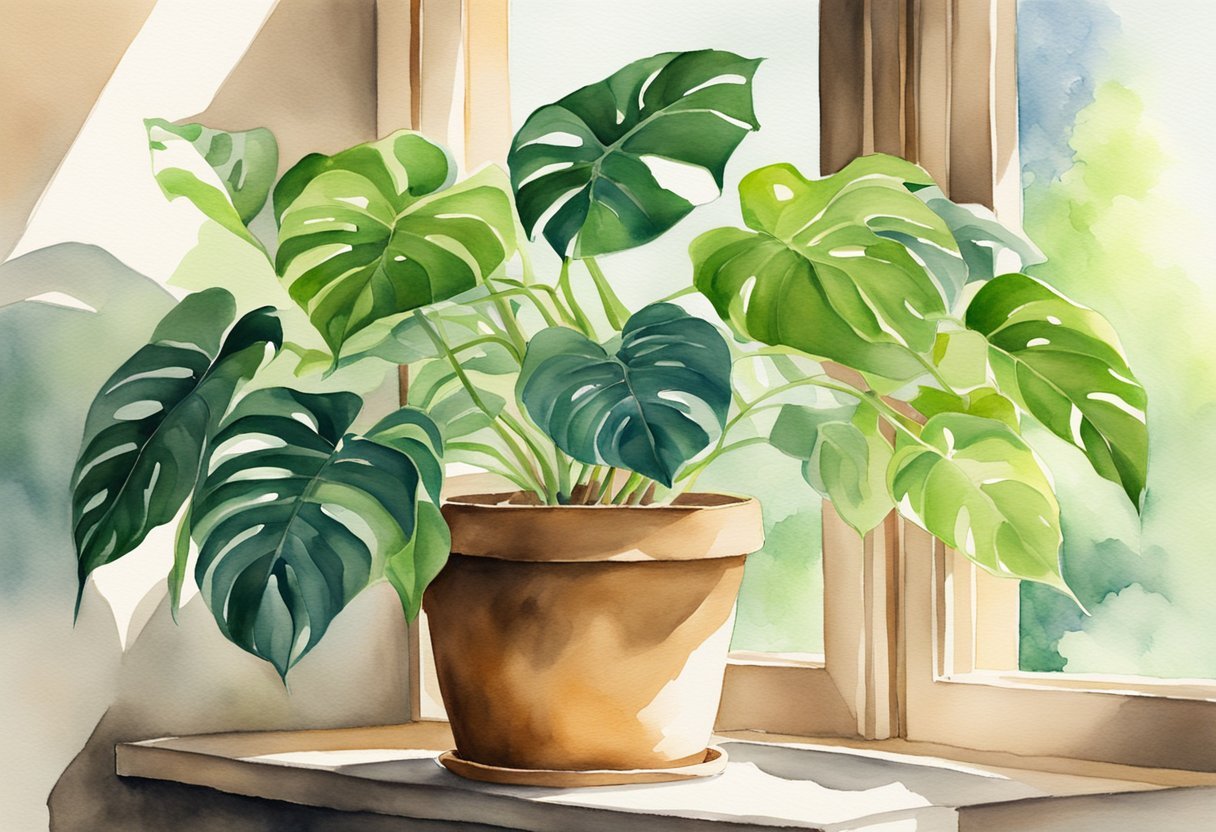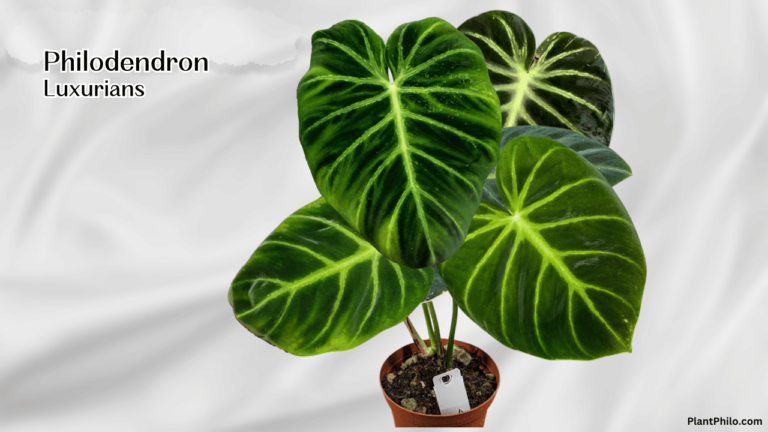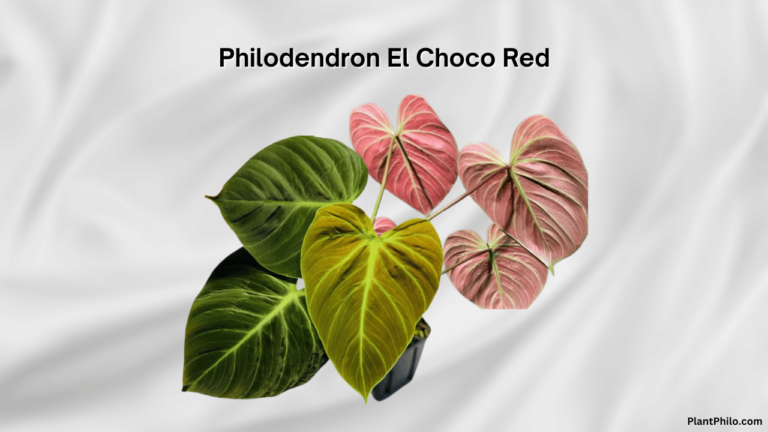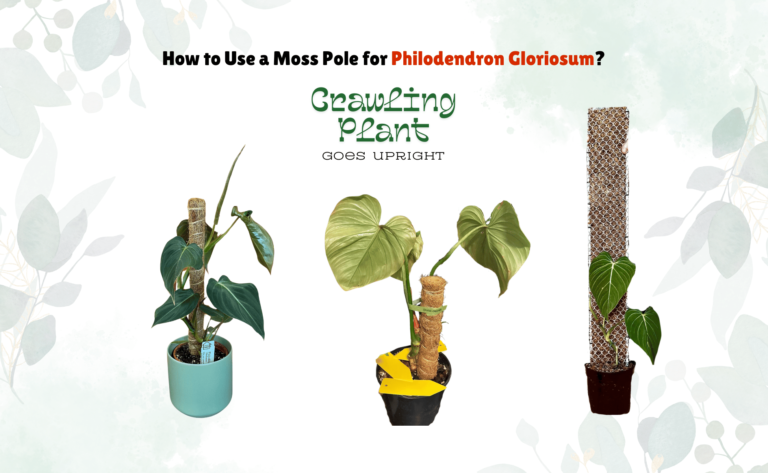A No-Nonsense Guide to Philodendron Light Requirements
Think your Philodendron is just a low-maintenance houseplant? Think again. Its silent screams for the right kind of light could be the difference between a thriving jungle queen and a sad, wilting wallflower. If your Philodendron could talk, it would probably be begging you for a better spot by the window by now. Don’t let your Philodendron’s true potential remain hidden in the shadows. Uncover the light recipes that will transform it from drab to fab, one leaf at a time.
In your own home, striking the right balance of light for your Philodendron is crucial to mimic their natural habitat and encourage healthy growth. Too little light can lead to leggy stems and sparse leaves, while too much direct sunlight can cause leaf burn, discoloration, and even plant death.
Finding the perfect spot for your Philodendron means understanding that these houseplants typically prefer bright, indirect light. Although durable, each variety might have its own specific needs based on its native environment.
For example, variegated types often require more light to maintain their patterns and colors.
But don’t worry, philodendrons usually communicate through their leaves, telling you if they’re receiving too much or too little light.
If your Philodendron is not getting enough light, it may grow towards light sources or exhibit smaller than usual leaves. Conversely, too much direct sunlight can cause leaves to fade or develop sunburned patches.
Key Takeaways
- Providing the right light conditions is key for healthy philodendron growth.
- Different philodendron varieties might have specific light requirements.
- Monitor your Philodendron’s response to light and adjust as necessary.
Understanding Philodendron Light Needs
In successfully cultivating Philodendrons, recognizing their specific lighting needs is pivotal. These needs are shaped by their tropical heritage and influence everything from their growth to the vibrancy of their leaves.
Importance of Lighting for Philodendron Growth
Natural Habitat: Your Philodendron is descended from the lush jungles of Central and South America, where bright indirect light filters through the dense forest canopy. This mimics the dappled sunlight they bask in naturally, providing a blueprint for their light requirements at home.
Photosynthesis: Like all plants, Philodendrons convert light into energy. Adequate indirect light is crucial for this process, ensuring your plant has the energy it needs to grow and flourish.
Effects of Different Lighting Conditions
Direct sunlight can scorch their leaves, while too little light leads to sparse, leggy growth. Philodendrons thrive in filtered sun, offering a balance that encourages strong, healthy development without the risk of damage.
Role of Light During Propagation
When propagating, light plays a decisive role in the development of new roots and foliage. Rooting cuttings in a spot with gentle indirect light can greatly enhance the rate and success of your propagation efforts.
Influence of Light on Color and Variegation
Variation in light needs among Philodendron types often corresponds with leaf color and variegation. Those with darker foliage can generally handle lower-light conditions better than their variegated or lighter-colored counterparts, which usually require more bright indirect light to maintain their stunning patterns.
Light Requirements for Different Philodendron Varieties
Your Philodendron’s growth and health are massively influenced by light, but not all types demand the same amount. Let’s break down the best light conditions for different varieties to keep yours thriving.
Low-Light Philodendrons
If your space doesn’t bask in a ton of natural sunlight, you’re in luck with low-light philodendrons. These easy-going varieties can handle less light, making them perfect for areas spaced further from windows or in dimmer conditions.
However, “low-light” doesn’t mean “no-light”—they still do best with some exposure to indirect sunlight. A spot in a room with a north-facing window often does the trick.
Example:
- Heartleaf Philodendron (Philodendron scandens or Philodendron hederaceum)
- Philodendron Micans
- Philodendron Brasil
- Philodendron ‘Lemon Lime’
- Philodendron ‘Moonlight’
- Philodendron ‘Imperial Green’
Medium-Light Philodendrons
For medium-light philodendrons, finding a sweet spot is key—they like it bright but not too bright. They’re happiest with steady, indirect light but can handle a smidgen more intensity than their low-light cousins.
A window with sheer curtains, like an east- or west-facing one, offers the dappled sunlight they crave. Just ensure it’s filtered to prevent scorching their pretty leaves.
Example:
- Philodendron Xanadu
- Philodendron ‘Prince of Orange’
- Philodendron ‘Birkin’
- Philodendron ‘Congo Rojo’
- Philodendron ‘Autumn’
- Philodendron ‘Golden Goddess’
High-Light Philodendrons
High-light philodendrons are the sun worshipers of the family. They’ll thrive near a south-facing window where they can soak up bright but indirect beams.
They can handle some direct rays, especially if acclimated properly, but be cautious—too much direct sunlight can still harm. If you see signs of too much sun (like browning leaves), it’s time to move them back a bit or use a light-diffusing blind.
Example:
- Philodendron Pink Princess
- Philodendron ‘Ring of Fire’
- Philodendron ‘White Knight’
- Philodendron ‘Florida Ghost’
- Philodendron ‘Jose Buono’
- Philodendron squamiferum
Tissue-Cultured and Variegated Philodendrons
Got a special tissue-cultured or variegated philodendron? These beauties often need more light to maintain their unique colors and patterns.
Aim for bright, indirect sunlight—places where the light is plentiful but softened by a curtain or a shade.
Just like with high-light lovers, a south-facing window can be an ideal location, but again, direct sunlight is a big no-no. Keep an eye on them to make sure their variegation stays vibrant without getting sun damage.
| Tissue-Cultured Philodendron | Light Requirement | Grow Light Specifications (if needed) |
| Philodendron Pink Princess | Bright, indirect light | Full spectrum LED grow light (4000-5000K) placed 12-18 inches above the plant |
| Philodendron White Wizard | Bright, indirect light | Full spectrum LED grow light (4000-5000K) placed 12-18 inches above the plant |
| Philodendron Melanochrysum | Bright, indirect light with shade | Full spectrum LED grow light (4000-5000K) placed 18-24 inches above the plant |
| Philodendron White Princess | Bright, indirect light | Full spectrum LED grow light (4000-5000K) placed 12-18 inches above the plant |
| Philodendron Silver Sword | Bright, indirect light | Full spectrum LED grow light (4000-5000K) placed 12-18 inches above the plant |
Ideal Light Conditions for Philodendrons
Philodendrons thrive in indirect sunlight that mimics the dappled light of their rainforest homes. You want to hit that sweet spot where your plant gets enough light to flourish without being scorched by direct rays.
Addressing Too Much Light
Natural Light: Too much light can quickly lead to scorched leaves, and too little can stunt your Philodendron’s growth.
If your plant’s leaves are turning yellow or brown and feel crispy, it’s likely bathing in too much direct sunlight.
Move your Philodendron away from that sunbeam and closer to a south-facing window where it can enjoy softer light.
Artificial Light or Grow Light: If you’re using grow lights, ensure they are not too close to the plant, as this can cause similar symptoms to excessive sunlight. Adjust the distance between the light and the plant or reduce the duration of exposure.
Conversely, if you’re seeing sparse leaves or leggy growth, your buddy doesn’t need to get more rays. Find a brighter spot where indirect light is more abundant.
Addressing Too Little Light
Natural Light: If your Philodendron isn’t getting enough light, its stems may become elongated and leggy, with sparse foliage. New leaves may be smaller and paler than older ones, and lower leaves might turn yellow and drop off. The plant’s overall growth may also slow down. Move your plant to a brighter location with more indirect light.
Artificial Light or Grow Light: If natural light is insufficient, you can supplement it with artificial grow lights. Choose full-spectrum LED or fluorescent lights specifically designed for plants. Position the lights 12-18 inches above the plant and provide 12-16 hours of light per day.
Addressing ‘Just Right’ Light Intensity
Understanding your space is key to managing light conditions.
Here’s a tip: use sheer curtains to filter intense sunlight—think dappled sunlight, not direct summer noon beams.
The ideal light intensity ranges from 250-1,000-foot candles, which you’ll find a few feet away from a window or in a room with a south-facing window.
Keep an eye on your plant’s response as the seasons change, and adjust its position to ensure it’s getting just the right amount of light throughout the year. When your Philodendron receives the right amount of light, you’ll notice these signs of healthy growth:
Vibrant Foliage: Leaves are a rich, deep green (or display the vibrant colors of variegated varieties).
Steady Growth: New leaves emerge regularly, and the plant’s overall size increases consistently.
Strong Stems: Stems are thick and sturdy enough to support the plant’s weight without drooping.
Compact Growth: The plant maintains a full, bushy appearance with leaves spaced evenly along the stems.
Foot-Candles: Aim for 1,000-2,000 foot-candles of light for most Philodendron varieties. Variegated types may require slightly higher levels (2,000-3,000 foot-candles). You can measure foot-candles using a light meter.
Identify How Much Light Your Philo Is Getting
Before adjusting your Philodendron’s spot in your home, you should evaluate how the current light conditions are affecting it. Here’s how you can tell if your plant is receiving too little light, too much, or just the right amount.
| Light Condition | Symptoms | Solution |
| Too Little Light | Leggy growth (elongated stems, sparse foliage), small/pale new leaves, loss of lower leaves, slowed/stunted growth, loss of variegation | Move plant to a brighter location with indirect light, consider supplemental grow lights |
| Too Much Light | Leaf scorch (brown/bleached spots), faded colors (in variegated types), wilting despite moist soil | Move plant to a location with less direct sunlight, provide shade during peak sun hours |
| Just Right | Healthy foliage (vibrant, full-sized leaves), steady growth, strong stems, maintained variegation (in variegated types) | Maintain current light conditions, monitor for any changes in leaf color or growth patterns |
Preventing and Solving Common Light Related Problems
It’s important to strike the right balance of light for your Philodendron to prevent issues like elongated stems or discolored leaves. You’ve got this—let’s keep your plant buddy happy and healthy.
Leggy Growth
If your Philodendron is stretching out with long spaces between leaves, it’s begging for more light.
Move your plant closer to a window, or consider using a grow light to provide more consistent light and mimic the sun’s natural spectrum.
Yellowing Leaves
When leaves turn yellow, they’re often screaming, “Help, too much sun!”
Gently transition your Philodendron to a spot with bright, indirect light. Direct sunlight can be harsh, so pull those curtains to filter the light or scooch the plant a few feet away from the window.
Slowed Growth
If the growth of your plant has slammed on the brakes, it could be craving more light.
Ensure your Philodendron gets several hours of indirect light daily; low light can lead to sluggish growth.
Rotate your plant to make sure all sides get their share of light.
Dealing with Pests and Diseases
Pests and diseases love stressed-out plants. If your Philodendron is weak from poor lighting, it’s more susceptible.
Bright, indirect light can ward off trouble by keeping your plant robust.
Still got bugs? Gently wash the leaves with soapy water or introduce natural predators like ladybugs.
Remedying Yellow Leaves and Root Rot
Overdoing it with water and light is a recipe for disaster.
Dial down the light if it’s too intense, and let the soil dry between waterings.
If the damage is done and you’re spotting yellow leaves or signs of root rot, it’s time to prune the affected areas carefully and adjust your care routine.
Philodendron Care Beyond Light
While meeting your Philodendron’s light requirements is crucial, other factors also affect your plant’s health. Let’s dive into the essentials of soil and water, temperature with humidity, and how to feed your leafy friend.
Soil and Water Needs
Your Philodendron’s happiness starts with good soil and proper watering habits.
Aim for a peat-based potting mix that drains well yet retains some moisture.
When it comes to watering, let the top inch of the soil dry out before giving it a thorough drink. Overwatering is a no-go – it’s a surefire way to court root rot.
Temperature and Humidity Preferences
Philodendrons prefer a warm spot with temperatures ranging between 65 and 78°F (18 and 25.5°C).
They also love a touch of humidity; think about 60% if you can swing it.
Keep your plant away from drafts and drastic temperature changes to avoid stress.
Fertilization and Nutrient Requirements
During the growing season, treat your Philodendron with a balanced, water-soluble fertilizer every 4-6 weeks.
During the fall and winter, ease up as your plant takes a bit of a growth break. Remember, less is more – too much food can harm as much as too little.
Frequently Asked Questions
Philodendron plants are adaptable, but they have specific light needs for optimal growth. Let’s address some common questions to help you ensure your Philodendron thrives.
How much light do philodendron plants typically require?
Philodendrons perform best in medium to bright, indirect light for about 6 to 8 hours a day. They’re not fans of harsh sunlight, which can damage their leaves.
Can Philodendrons thrive in areas with minimal light?
While they prefer brighter light, philodendron plants can survive in lower light conditions, although growth may slow, and you might notice less vibrant foliage.
What’s the best spot in a home to place a philodendron for optimal growth?
Your Philodendron would love a spot where it can receive filtered or indirect light, such as near a window with sheer curtains or in a well-lit room without direct sun exposure.
Can I put my Philodendron in direct sunlight?
Direct sunlight can be harmful, leading to drooping or wilted leaves. It’s best to keep your Philodendron out of the direct sun’s rays.
What are the lighting considerations for different philodendron types indoors?
Different philodendron varieties may have unique light needs. Variegated types, for example, often require more light to maintain their distinctive patterns compared to non-variegated ones.
How does lighting affect the watering schedule for philodendron plants?
Adequate light helps philodendrons use water efficiently. If your plant is in a lower-light environment, you should water it less often. This is because the soil won’t dry out slowly.




